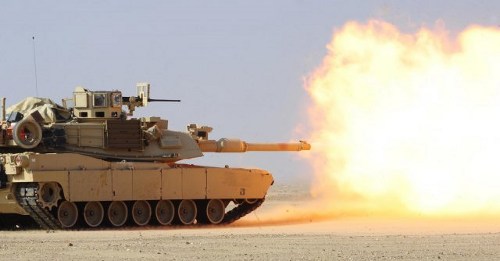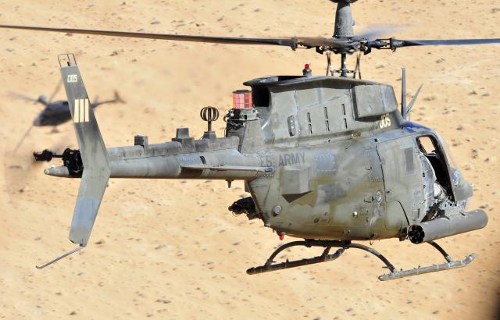 |
| May 14, 2013 | Volume 09 Issue 18 |
Designfax weekly eMagazine
Archives
Partners
Manufacturing Center
Product Spotlight
Modern Applications News
Metalworking Ideas For
Today's Job Shops
Tooling and Production
Strategies for large
metalworking plants
Budget cuts mean Army must consider where it will buy weapons
By C. Todd Lopez, Army News Service
With sequestration firmly in place, the Army will be buying a lot less stuff, and leaders are concerned about ensuring the businesses they buy things from don't wither.

The Lima Army Tank Plant, Lima, Ohio, which produced the M1A2 tank, will stay open and busy until at least 2018, producing tanks and other equipment for both the U.S. Army and for sale to foreign countries through the Army's foreign military sales program. [Photo Credit: Sgt. Christopher Johnston]
Lawmakers with the House Armed Services Committee, subcommittee on tactical air and land forces, met April 26, with Lt. Gen. James O. Barclay III, deputy chief of staff, Army G-8, and Lt. Gen. William N. Phillips, the military deputy to the assistant secretary of the Army for Acquisition, Logistics, and Technology.
Phillips told lawmakers in his opening statement the Army is deeply concerned about sequestration-induced atrophy in the industrial base that could lead to the Army having no place to go shopping for equipment when the time comes to go to war.
"Of great concern to the Army are the likely long-term impacts to include the loss of critical skills, the loss of suppliers at all tiers, and an increase in the number of single-point failures in the supply chain," Phillips said. "The Army is aggressively evaluating how best to identify and preserve critical industrial base capabilities."
Preservation of the "industrial base" means ensuring those businesses the Army buys equipment from don't have to close their doors due to lack sales from one of its biggest customers.
One such facility -- actually an Army-owned facility that lawmakers were concerned about -- is the Joint Systems Manufacturing Center at Lima, Ohio. The Army makes M1A2 Abrams tanks there for its own use and for sale to foreign nations through foreign military sales.
Phillips told lawmakers it's not the Army's intent to shut down the Lima facility.
Right now, he said, the Army is still manufacturing 67 tanks at the facility that were paid for in the fiscal year 2012 budget. The production will keep the facility busy through December 2014. Congress also authorized an additional $181 million, Phillips said, to procure an additional 20 to 24 tanks. Coupled with foreign military sales to other nations and other equipment produced at the facility, it will be secure in its operations and commitment until at least 2018, the general said.
Kiowa Warrior update
The Army has been looking for a follow-on to the OH-58 Kiowa Warrior helicopter for some time. As one lawmaker pointed out, the Army was going to replace the Kiowa Warrior with the Comanche aircraft -- but that program was cancelled. There was also the Armed Reconnaissance Program and most recently the Armed Aerial Scout, or AAS, program. The AAS program recently looked at commercially available helicopters to see if they would be good candidates for militarization -- but none proved to be a viable candidate.

A Task Force Destiny, 101st Combat Aviation Brigade OH-58D Kiowa Warrior helicopter conducts aerial reconnaissance over the Red Desert in southern Afghanistan Jan. 31, 2011. [Photo Credit: Staff Sgt. Sarah Bleistein (101st Airborne)]
Barclay said the Army continues to look for a replacement for the Kiowa Warrior, however, it is also now working on modernization of the aircraft. By late summer, he said, based on outcomes of fiscal guidance, the Army will make a determination on the way ahead for the Armed Aerial Scout program, or will make a determination on a service life extension program, or SLEP, for the Kiowa Warrior. Still, he said, those options would not get into the field until the mid- to late 2020s.
As a stop-gap, he said, the Army is now working the cockpit and sensor upgrade program, or CASUP, for the Kiowa Warrior. That, he said, includes "obsolescence and safety upgrades" to the current fleet. The first Kiowa Warrior with the CASUP upgrades will fly an inaugural flight this spring.
"That is our bridge," he said, until decisions are made about SLEP or AAS.
Funding for reset
Barclay also told lawmakers that, despite drawdown and budget cuts, the Army must have funding for reset of equipment coming out of Afghanistan. It's not the first time Army leadership has said as much on the Hill.
In particular, Barclay said the Army needs three years of additional overseas contingency operations funding following the withdrawal from Afghanistan in order to fix and repair the equipment coming out of that country. Equipment, once reset, doesn't just go into storage. It goes to units who need to use it to train, and who need it in order to be ready for deployment in case they are called to deploy.
"Failure to get this right will impact the equipment readiness of our units for years to come," Barclay said.
Published May 2013
Rate this article
View our terms of use and privacy policy
